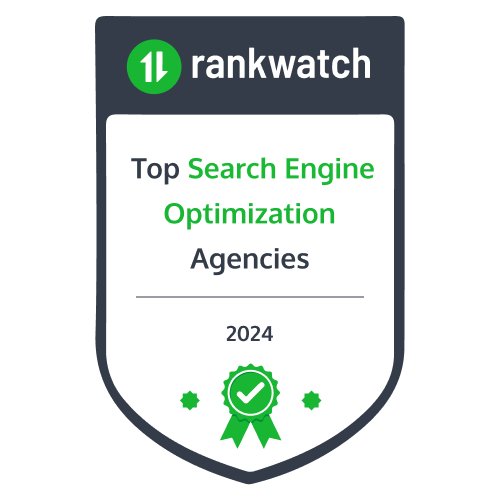Meeting and exceeding customer expectations at every stage of the customer journey leads to higher satisfaction, increased loyalty, and better lifetime value. Customer experience alone drives over two-thirds of loyalty. Moreover, customer-centric brands report 60% higher profits than their peers who don’t prioritize CX.

Fortunately, improving the customer experience isn’t as tricky. Big data allows you to analyze vast customer behavior data and gather actionable insights. From attracting the right audience to predicting needs and optimizing inventory, big data will enable you to create more tailored interactions across channels. Let’s understand how!
What is Big Data?
Big Data refers to massive, complex data sets that traditional data processing applications cannot handle efficiently. The three Vs typically characterize these data sets:
- Volume: It refers to the vast amount of data being generated and stored. The quantity of data produced per second, minute, and hour basis is massive.
- Velocity: In the era of big data, the speed at which new data is produced and moved around is breakneck. The flow of data is nonstop.
- Variety: Data today comes in all types of formats and from a wide range of sources. Structured, numeric data in traditional databases is now accompanied by unstructured text documents, email, video, audio, financial transactions, images, clickstreams, log files, and more.
Big data aims to extract meaningful insights that lead to better decision-making, improved processes, and innovation.
7 Ways Big Data Can Improve the Customer Experience
Big data unravels patterns, preferences, and trends in customer behavior. That empowers businesses to make informed decisions that directly impact satisfaction and loyalty. Let’s explore seven critical ways big data can elevate the customer experience.
- Attract the Right Audience with Precise Targeting
Big data lets companies analyze customer behavior, demographics, psychographics, and purchase history to identify their best-fit audience. That allows for micro-targeting of marketing efforts to only the most promising segments.
Let’s understand this with an example. An outdoor retailer can study past purchase data and online browsing behavior to identify customer groups most likely to buy hiking shoes or camping gear. With these insights, they can precisely target relevant social media or PPC ads to those high-potential groups.
- Create Personalized Experiences
Today’s customers expect and reward relevant, individualized experiences. 59% of consumers believe businesses should use the data they collect about them to personalize their experiences.
Personalization is all about crafting tailored offerings and messaging for each customer. How is this possible? With a unified view of each customer from their purchase history, browsing behavior, and communication preferences, you can craft tailored offerings and messaging. Moreover, big data’s role in personalization extends to real-time adjustments.
Here’s an example. By continuously analyzing customer interactions, companies can dynamically adapt offerings and communications. That ensures relevance and responsiveness, creating a seamless and personalized journey.
- Build Customer Loyalty
By applying advanced analytics to rich customer data, you can identify behavioral trends that reveal your most valuable yet at-risk segments. Identify clients showing declining purchase patterns or changed engagement levels to deploy targeted retention campaigns before it’s too late.
Algorithmic models can predict individual customer lifetime values and guide you in offering perks and incentives to those with higher CLVs. Customers who feel genuinely appreciated through data-driven personalized rewards are likelier to stay with your brand.
- Detect Possible Issues
By centralizing multiple customer feedback channels, big data helps you spot emerging issues early. You can analyze operational metrics versus satisfaction scores to surface backend process deficiencies impacting experiences.
Additionally, you can mine user reviews and social media conversations to pinpoint frequently cited customer grievances and recurring complaints. Simultaneously, monitor real-time voice-of-customer metrics like feedback surveys and sentiment trackers to identify changes as they unfold. You can develop solutions to product liability and rapidly respond to problems before mass customer defections occur.
- Streamline Processes
Big data analyzes historical and current data to identify patterns and trends. That empowers you to anticipate future challenges and opportunities, proactively streamline processes, and mitigate potential issues.
Besides, big data analytics provides insights into customer preferences, buying patterns, and feedback. You can use the data to optimize your processes and improve resource allocation to streamline operations.
- Optimize Inventory
Big data analytics can analyze historical sales data, market trends, and external factors to predict future demand accurately. By forecasting demand more effectively, businesses can optimize inventory levels, ensuring they have the right amount of stock to meet customer needs without excess.
Furthermore, big data provides real-time visibility into the entire supply chain. This visibility allows organizations to track the movement of goods, identify potential bottlenecks, and respond quickly to disruptions. Optimizing the supply chain improves inventory management by reducing lead times and minimizing stockouts or overstock situations.
- Predict Future Trends and Customer Behaviors
Big data analytics employs algorithms and machine learning models to uncover subtle patterns in large volumes of historical data. These models identify correlations, anomalies, and other insights that would be nearly impossible to detect manually and avoid workplace accidents.
Once built, the models can analyze new real-time data to spot emerging trends and predict where things are headed. For example, if factors that previously led to growth in hiking gear sales are appearing again, models can forecast a likely resurgence before it happens.
Conclusion
Big data analytics empowers deeper customer understanding. That drives the tailored, predictive interactions that customers now expect. While leveraging big data requires investment in technology and culture, the long-term gains make it worthwhile. Remember that more meaningful customer relationships translate to improved loyalty and lifetime value.




